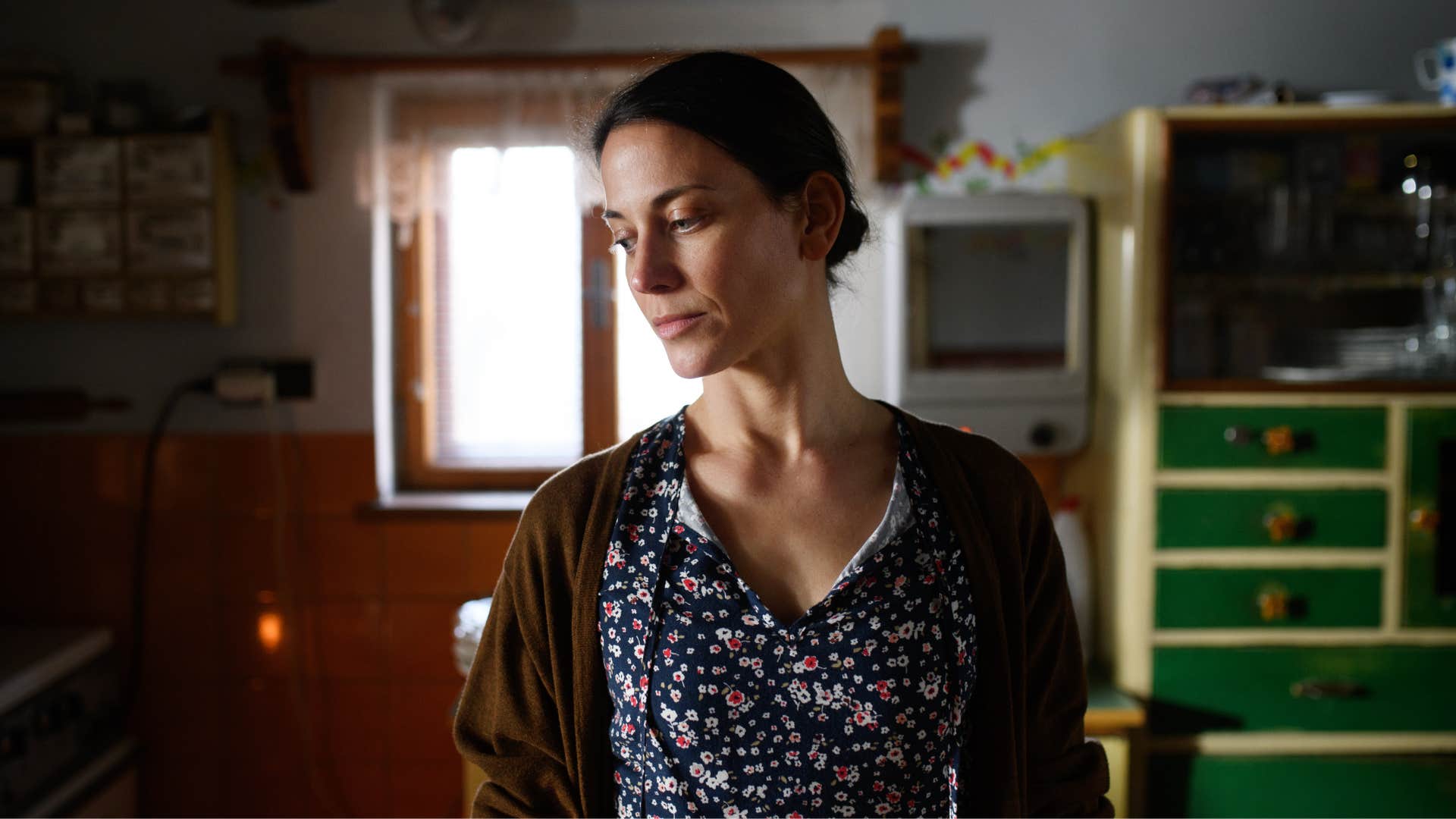11 Things Our Grandparents Did So They Could Retire That Just Don't Exist Today
Retirement looks drastically different now than it did eighty years ago.
 Kleber Cordeiro | Shutterstock
Kleber Cordeiro | Shutterstock Just a few generations ago, the American dream of a stable job and a peaceful retirement seemed well within reach. Our grandparents came of age in an era where social and economic structures were being built for the first time. Many benefited from union protections, affordable housing, and during a time when the cost of living didn't exceed their wages. At the same time, systemic tools like vagrancy laws criminalized part of the population for their poverty and unemployment.
This pushed people into the labor force whether they wanted to or not, giving them little choice or risking imprisonment. Looking back on it now, not much has changed as we head down the same path that our grandparents took. The major difference is that while they retained and gained the good benefits, we are losing ours, what little is left of them.
Here are 11 things our grandparents did so they could retire that just don't exist today:
1. They had guaranteed pensions just for showing up to work
 Inside Creative House | Shutterstock
Inside Creative House | Shutterstock
Having a guaranteed pension was the standard of retirement back in our grandparents' day. Simply working at a company meant that your job was secure for the next thirty to forty years. This peace of mind offered household stability, but fast-forward to today, workers are left with 401(k) plans or IRAs, if their employer offers them at all.
The problem here is that retirement varies from person to person, and your economic background plays a huge role in whether you get any kind of benefits.
Black and Latino Americans advocated for laborers' rights by creating labor unions. People like A. Philip Randolph on the West Coast, who led the Brotherhood of Sleeping Car Porters to improve conditions for the workers on trains, boats, and farms. While on the East Coast, Luisa Moreno helped organize Latino labor workers in New York City, Louisiana, and Florida during the 1930s.
2. They could actually count on job security
 BongkarnGraphic | Shutterstock
BongkarnGraphic | Shutterstock
Today's world is extremely different from our grandparents when it comes to having job security. We practically live in a gig economy where people work two to three side hustles to barely pay their bills. Gone are the days when you stayed on a company's payroll for ten to twenty years.
Many get blindsided by company layoffs even when there are signs that it's coming down the pipeline.
A Pew Research Center survey found that 69% of U.S. workers say they have at least a fair amount of job security, but that confidence isn’t shared equally. Income level and racial background play a significant role, with White workers from upper-income households feeling notably more secure in their jobs compared to Black, Hispanic, and Asian workers, who were far less likely to say they feel a great deal of job security.
3. They bought homes when housing was actually affordable
 Ground Picture | Shutterstock
Ground Picture | Shutterstock
Our grandparents were able to own multiple homes due to affordable housing. Having affordable housing is now considered a luxury, and it doesn't matter how long you try to save for it, the chances of you purchasing your dream home are slim.
Renting used to be a cheaper alternative to save up for a home, but now apartments can be just as expensive as single-family homes.
In the 1960s, the median price for a home in the U.S. was around $19,256 in January. Fast-forward to January of 2025, and the median home price is at $415,026. It’s been sixty-five years since, and prices for homes just keep increasing. The security that they felt may never come to us in our lifetimes as the oldest of us, Gen X, are now getting closer to their retirements.
4. They had strong unions fighting for their rights
 Krakenimages.com | Shutterstock
Krakenimages.com | Shutterstock
Unions have worked hard to fight for our rights as workers. Many of us would not have the benefits or rights that we do without their negotiations on our behalf with the companies that we work for.
Back in the day, our grandparents had the strongest unions fighting for our rights. Union leaders like A. Philip Randolph, Luisa Moreno, and John L. Lewis led the charge on making workers' lives safer both professionally and personally. Lewis, in particular, was the president of the United Mine Workers of America and started the Committee for Industrial Organization to organize their workers.
While the media might have you believe that people don't care about unions or feel as if they are asking for too much, around 54% of U.S. adults believe the decline in union membership has been bad for the country. In comparison, 59% think it's bad for working people.
This widespread recognition of the negative impacts of declining unionization just shows how important workers' rights and benefits are in America.
5. Their cost of living was way lower
 ShishkinStudio | Shutterstock
ShishkinStudio | Shutterstock
Food is a necessity in this country, and right now, we are seeing inflation take every last dollar we own away from us. For some of our grandparents, going to food pantries was a common thing if they were from low-income households. While it helped them save money to spend on other important things, not much has changed since their day.
Many families struggle to feed themselves, and even if they are doing everything right, their communities are hit the hardest when things go wrong. Several still go to food pantries to this day, with some visiting their local churches for any type of food drive to alleviate the burden. Their grandchildren have even taken up gardening as a skill to grow food for their communities.
6. They didn't drown in student debt
 fizkes | Shutterstock
fizkes | Shutterstock
Higher education in our grandparents' day was far more affordable than it is now. Tuitions and supplies could be paid through part-time jobs. That meant that young adults could begin saving much earlier, setting themselves on a solid path toward financial independence.
Today, however, student debt is a particular thorn in the side of many post-grad Americans. Many students are leaving with debt in the tens of thousands, with never-ending interest piling up on it, making it impossible to save for retirement.
A study from Washington State University in St. Louis found that in 2009, households without student debt had median retirement savings of $55,000 while similar households with student debt had just $25,000.
What makes it even more sinister now is that there is no way out of these loans. Unlike other loans, a student cannot file for bankruptcy on their student loans.
7. Their savings actually earned interest
 Chay_Tee | Shutterstock
Chay_Tee | Shutterstock
Back in the day, high-interest savings accounts helped our grandparents stash their money where they could watch it grow steadily over time with minimal risk. In the 1980s, the Federal Reserve raised interest rates to combat high inflation, leading to higher savings accounts and Certificate of Deposit (CD) rates.
Today, interest rates on savings accounts are low and can barely keep up with inflation. This means putting money into our savings accounts no longer offers the same kind of growth that it did for our grandparents.
Some of us even feel like we need a certain amount of money in our bank accounts to feel satisfied. Yet, this dream of lower inflation and higher interest on savings accounts seems like a faraway dream.
8. Social Security felt more like a promise than a gamble
 Inside Creative House | Shutterstock
Inside Creative House | Shutterstock
Social Security was always considered a lifeline to many Americans because it provided a safety net not just for employed individuals but for children under the age of eighteen. These children were given what was called survivor benefits after a parent had passed until they were eighteen.
In the 1930s, Social Security excluded Black and Latino Americans until the advancements of civil rights changed that.
As more social programs get cut and more people of all backgrounds are being excluded, it’s important to remember how much these programs have historically helped uplift millions of Americans out of poverty and provide stability for families.
They aren't just benefits, they're lifelines that can help them save money elsewhere. Things like retirement aren't cheap. The taxpayers all pay into these programs and are more than willing to make sure that the most vulnerable get access to them.
9. Labor laws pushed people into the workforce, but also made retirement possible
 SeventyFour | Shutterstock
SeventyFour | Shutterstock
In the past, labor laws were less protective but more straightforward, to the point where older workers were allowed to retire earlier due to a physically demanding job. Many industries had informal agreements or customs where older employees were encouraged to step aside for younger workers.
This created a kind of unofficial and natural retirement system. But not all workers during our grandparents' time were treated the same. Black Americans in the South had to deal with Jim Crow and vagrancy laws.
Vagrancy laws, in particular, would criminalize unemployment or homelessness, which pressured people back into the workplace. Black women, in particular, faced the potential of imprisonment if they did not go back to work, despite most white women being allowed to work from home at the time.
10. One income was enough to support a whole family
 Gorodenkoff | Shutterstock
Gorodenkoff | Shutterstock
One of the most obvious signs that our grandparents had it way better than we do is that one income was enough to support an entire family. Not only were they able to afford a home, but also food and other necessities.
Today, many struggle with everything from education costs to rent and mortgages. Many modern families rely on multiple streams of income, sometimes two jobs between two people.
Even with more side jobs readily available to us, the cost of everything is so high that we can’t keep up.
11. Healthcare didn't cost an arm and a leg
 Prostock-studio | Shutterstock
Prostock-studio | Shutterstock
One of the key advantages our grandparents had at their disposal was lower healthcare costs. Decades ago, both routine and emergency medical services were more affordable relative to income. Medical inflation existed, but not at the pace that we have today.
Employer-sponsored health benefits play a huge role now, the same way they did back then. Most people stayed at a job to get the health benefits, and that has not changed one bit.
The difference is that now insurance companies want to negotiate rather than cover everything. Like with social security, it leaves people who pay into these programs wondering why they should fork over their dollars if they are not guaranteed the service later on.
Sylvia Ojeda is a screenplay writer and journalist who covers self-help, relationships, culture, and human interest stories.

